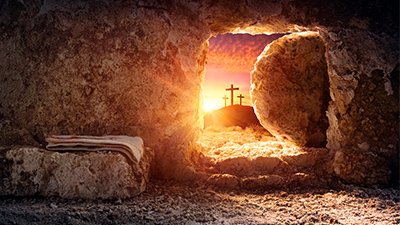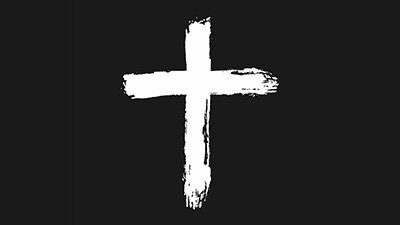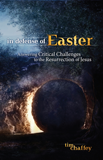
Jesus Family Tomb
Tim Chaffey, AiG–US, examines the claim that archaeologists have discovered the tomb of Jesus and His family.
Many critical New Testament scholars have pushed the idea that numerous versions of Christianity existed in the earliest years of the church. We are told by these liberal theologians that chauvinistic, power-hungry church leaders developed their own understanding of Christianity, squelching dissenting voices and destroying writings from these “competing Christianities” that did not conform to their narrow-minded dogmas. The books that survived this purge, they say, form what we call the New Testament today.
While these views of the early church and the formation of the canon are false, they have rapidly grown in popularity during the past century. The discovery of the Nag Hammadi Gnostic texts in 1945 helped prepare the fertile soil out of which these false views blossomed into the mainstream in the late twentieth century. The Da Vinci Code’s popularity (over 80 million copies sold worldwide) further promoted these lies.
This alternative “Christianity” that supposedly existed is not Christianity at all, but a counterfeit that would make envious the most radical revisionist historian. We are told that Jesus was really married to Mary Magdalene, never said anything offensive to sinners, did not die for the sins of the world, and did not rise bodily from the dead. It is this distorted form of “Christianity” that paved the way for the next alternate theory invented to explain away the Resurrection of Jesus.
Jesus Family Tomb
On Sunday, March 4, 2007, the Discovery Channel aired The Lost Tomb of Jesus, a documentary produced by award-winning film director James Cameron featuring Simcha Jacobovici from the History Channel’s Naked Archaeologist show and James Tabor, chair of the Department of Religious Studies at the University of North Carolina–Charlotte. They also released a book titled The Jesus Family Tomb. The program created quite a stir because these people claimed to have solid evidence that they had found the ossuary (bone box) of Jesus in a tomb in the Talpiot neighborhood of Jerusalem. One of the ossuaries in this tomb supposedly bore the inscription, “Jesus, son of Joseph.”
Based on this discovery, the filmmakers wove a tale so profound that—were it true—would completely dismantle the Christian faith. Along with the Jesus ossuary, there were originally other bone boxes found, many of them bearing names closely connected with Jesus, such as Matthew, Mary, and Jose (shortened version of Joseph). Jacobovici claimed that the famous James ossuary (purported to be the bone box of the brother of Jesus) was the missing tenth ossuary from the Talpiot tomb. Perhaps even more volatile were claims that would be right at home in The Da Vinci Code. Allegedly, a bone box inscribed with the words “Mary the master” belonged to Mary Magdalene and a box marked “Judah, son of Jesus” belonged to the child of Jesus and Mary Magdalene.
Although many major media outlets push such radical ideas as representing true Christianity, the beliefs of modern critical scholars are far from biblical truth. A great illustration of how extreme their views are can be found in the comments of the cofounder of the Jesus Seminar. Although he has promoted other views to explain away the Resurrection, John Dominic Crossan made the following comments in Jacobovici’s film.
If the bones of Jesus were to be found in an ossuary in Jerusalem tomorrow and without doubt let’s say they are definitely agreed to be the bones of Jesus, would that destroy Christian faith? It certainly would not destroy my Christian faith. I leave what happens to bodies up to God.1
Crossan’s “Christian faith” is not Christian at all, since a denial of the bodily Resurrection of Jesus is actually a rejection of the Christian faith (1 Corinthians 15:12–21; Romans 10:9).
Thankfully, the Discovery Channel followed the documentary with Lost Tomb of Jesus: A Critical Look, a program hosted by Ted Koppel featuring Jacobovici and Tabor. There were also two teams of scholars consisting of archaeologists and theologians who discredited many of the claims made in the initial broadcast.
Koppel exposed the filmmakers for selectively editing comments from experts. In a Sourceflix production, The Jesus Tomb Unmasked, the following experts appearing in the original documentary express their frustration with being so heavily edited to make it sound as if they supported the claims of the documentary: Dr. Stephen Pfann (epigraphy), Steven Cox (forensic archaeologist), Dr. Shimon Gibson (archaeologist), and Dr. Amos Kloner (archaeologist). Each of these men rejects the hypothesis put forward by Jacobovici. Kloner led the original excavation of the Talpiot site in 1980 and stated emphatically that the tomb did not belong to Jesus Christ and blasted the film.
Their movie is not serious. They [say they] are “discovering things.” But they haven’t discovered anything. They haven’t found anything. Everything had already been published. And there is no basis on which to make a story out of this or to identify this as the family of Jesus.2
Besides the dubious, misleading, and sensationalist filmmaking practices, what are the problems with the actual hypothesis? Dr. Kloner explains one of the major problems with this position.
It makes a great story for a TV film. But it’s completely impossible. It’s nonsense. There is no likelihood that Jesus and his relatives had a family tomb. They were a Galilee family with no ties to Jerusalem. The Talpiot tomb belonged to a middle class family from the first century CE.3
Based on what we know about the family of Jesus from Scripture, Kloner’s critique hits the mark. Even if Jesus did not rise from the dead, there are still multiple problems with identifying the Talpiot tomb with Jesus of Nazareth. One could propose that His family eventually moved to Jerusalem and either became wealthy or obtained a tomb from a wealthy person. But there are still problems.
The correlation of the names on the ossuaries is vastly overstated because each of the names was extremely common in Judea in the first century AD. Dr. Stephen Pfann, who appeared on the program and has studied the actual ossuary inscriptions, stated the following:
They’ve evaluated this from the standpoint of the common person on the street rather than according to what the common person on the street, let’s say, 2000 years ago would understand if you saw that there was a Jesus, son of Joseph. These are very, very common names, and it’s kind of making the mountain out of a molehill type of thing.4
More specifically, consider just how popular these names were in Israel at the time:5
- Joseph/Joses was the second most popular male name.
- Judas/Yehuda was the fourth most popular male name.
- Jesus/Yeshua was the sixth most popular male name.
- Matthew/Matthias was the ninth most popular male name.
- Mary was the most popular female name.
- Martha was the fourth most popular female name.
Conveniently, the filmmakers neglected to mention that two other ossuaries bearing the inscription “Jesus, son of Joseph” were found in the twentieth century.6 They also misled viewers by giving a wildly speculative interpretation of the name “Mariamenon” (one of the names on the ossuary) in claiming that this is Mary Magdalene. However, “there is no justification at all” for making this connection.7
Another problem for the filmmakers’ hypothesis is that the so-called Jesus ossuary may not actually bear the name of Jesus at all. While the phrase “son of Joseph” is discernible, the etchings to the right are not so easy to read. Steve Caruso stated, “I cannot be even 10% conclusive about anything else in this inscription other than the name ‘Joseph.’”8 Dr. Pfann said that the name is probably Hanun instead of Jesus.9
Jacobovici made numerous reprehensible statements toward the Christian faith, but he also made a scandalous accusation against the original excavation team, implying that one of the members of this team stole the tenth ossuary from the tomb, which the filmmakers suggest was the James ossuary. This idea may be the most misleading of any of the forensic claims in the entire deceptive film. According to Dr. Gibson, the man in charge of sketching the ossuaries as part of the original expedition, the tenth ossuary found in the Talpiot tomb was broken, uninscribed, and undecorated, so it was not stored with the inscription-bearing ossuaries. Yet the James ossuary is unbroken, inscribed, and decorated.10 Furthermore, the two ossuaries have different dimensions and a photograph of the James ossuary was taken in 1976, but the Talpiot tomb was uncovered four years later.11 For Jacobovici to ignore the overwhelming evidence contrary to his view and suggest that the real archaeologists simply missed the inscription or failed to keep the box from being stolen is highly irresponsible and disgraceful.12 It would be hard not to conclude that he deliberately distorted the facts as a result of personal antipathy against Christianity.
One simple question should settle the matter of the so-called Jesus family tomb. If, as the filmmakers imply, the evidence overwhelmingly supports their claim to have found the remains of Jesus and His family, why did they resort to deception after deception to make their case? The fact is that this scenario preys on people who are ignorant of history, is based on sensationalism and fraud, and does not even approach making sense of the historical evidence. It does not even attempt to explain the empty tomb, “the infallible proofs” of the risen Jesus appearing to more than 500 people, or the conversions of Paul and James.
A Caution to Christians and Non-Christians Alike
Our society has provided a steady stream of supposed refutations of biblical truth. These often come from the Internet and popular media featuring friendly hosts, dazzling graphics, and authoritative-sounding pronouncements from experts. We need to be on our guard against these programs that seemingly prove the Bible wrong with their supposed “facts.” The so-called Jesus family tomb was just another attempt in a long line of failed efforts to explain away the historical reality of the Resurrection of Jesus Christ. As we have seen, this hypothesis can easily be dismantled by a little bit of fact-checking.
Christianity is not a “blind faith” without historical grounding. Instead, it is a reasonable and defensible faith (Acts 17:2–3; 18:4; Jude 3). The next time you see or hear teaching that appears to contradict the Scriptures, remember that weak arguments, distortion of facts, and even outright deception are not uncommon practices for revisionist historians, atheists, and others seeking to prove Christianity wrong. The Bible has withstood these assaults throughout history, and it will survive the attacks of modern critical scholarship. No matter what rebellious people may say, we can be certain that Jesus Christ rose bodily from the grave and presented Himself alive by “many infallible proofs
” (Acts 1:3).
Conclusion
In some ways, thinking about the so-called Jesus family tomb scenario reminds me of Psalm 2.
Why do the nations rage, and the people plot a vain thing? The kings of the earth set themselves, and the rulers take counsel together, against the Lord and against His Anointed, saying, “Let us break Their bonds in pieces and cast away Their cords from us.”
He who sits in the heavens shall laugh; the Lord shall hold them in derision. Then He shall speak to them in His wrath, and distress them in His deep displeasure: “Yet I have set My King on My holy hill of Zion.”
“I will declare the decree: the Lord has said to Me, ‘You are My Son, today I have begotten You. Ask of Me, and I will give You the nations for Your inheritance, and the ends of the earth for Your possession. You shall break them with a rod of iron; You shall dash them to pieces like a potter’s vessel.’” (Psalm 2:1–9)
It is not only the angry and outspoken atheists who rage and plot vain things against God. Often the deadliest attacks come from mild-mannered and charming individuals like John Dominic Crossan and Simcha Jacobovici. Jesus warned about these types of false teachers, identifying them as wolves in sheep’s clothing (Matthew 7:15). Paul warned the Ephesian elders of “savage wolves” who would speak “perverse things” to lead people astray (Acts 20:29–30). Yet no matter how prevalent man’s deceptions become, God is always in control, His truth will always prevail, and one day He will crush all rebellion.
The solution for those who have been led astray is the same as it is for those wolves that have deceived them. Psalm 2 concludes with the following words:
So now, you kings, do what is wise; you rulers of the earth, submit to correction! Serve the Lord in fear! Repent in terror! Give sincere homage! Otherwise he will be angry, and you will die because of your behavior, when his anger quickly ignites. How blessed are all who take shelter in him! (Psalm 2:10–12, NET)
The only way to avoid the coming wrath of God, which you deserve for your rebellion against your Creator, is to repent of your sin and take shelter in Him by calling out for forgiveness to the risen Savior Jesus Christ.
Footnotes
- Transcription of Crossan’s comments in the film are from Charles Quarles, Buried Hope or Risen Savior: The Search for the Jesus Tomb (Nashville, TN: B&H Academic, 2008), 10–11.
- Mati Milstein, “Jesus’ Tomb Claim Slammed by Scholars.” Available at http://news.nationalgeographic.com/news/2007/02/070228-jesus-tomb.html. Accessed January 25, 2013.
- David Horovitz interview with Amos Kloner cited in Quarles, Buried Hope or Risen Savior: The Search for the Jesus Tomb, 5.
- Interview with Dr. Stephen Pfann, Expedition Bible, The Jesus Tomb Unmasked DVD.
- Richard Bauckham, “The Names on the Ossuaries” in Quarles, Buried Hope or Risen Savior, 75.
- Interview with Dr. Amos Kloner, Expedition Bible, The Jesus Tomb Unmasked DVD.
- Bauckham, “The Names on the Ossuaries,” 100.
- Steve Caruso, “The Jesus Son of Joseph Inscription Part 2,” The Aramaic Blog, March 29, 2007. Available at http://aramaicnt.org/2007/03/30/the-jesus-son-of-joseph-inscription-part-2/. Accessed January 31, 2013. Caruso said he was 95% sure that the “Lost Tomb” proponents had correctly interpreted the shin (Hebrew letter giving the “sh” sound in Yeshua), but could not be more than 10% certain of anything else other than “Joseph.”
- Gary Habermas, The Secret of the Talpiot Tomb: Unravelling the Mystery of the Jesus Family Tomb (Nashville, TN: Holman Reference, 2007), 39.
- Interview with Dr. Shimon Gibson, Expedition Bible, The Jesus Tomb Unmasked DVD.
- Craig A. Evans, “The East Talpiot Tomb in Context” in Quarles, Buried Hope or Risen Savior, 67–68.
- For an in-depth analysis of the problems with the Jesus Family Tomb program, see The So-Called Jesus Family Tomb by Gordon Franz.
Recommended Resources

Answers in Genesis is an apologetics ministry, dedicated to helping Christians defend their faith and proclaim the good news of Jesus Christ.
- Customer Service 800.778.3390
- Available Monday–Friday | 9 AM–5 PM ET
- © 2026 Answers in Genesis




